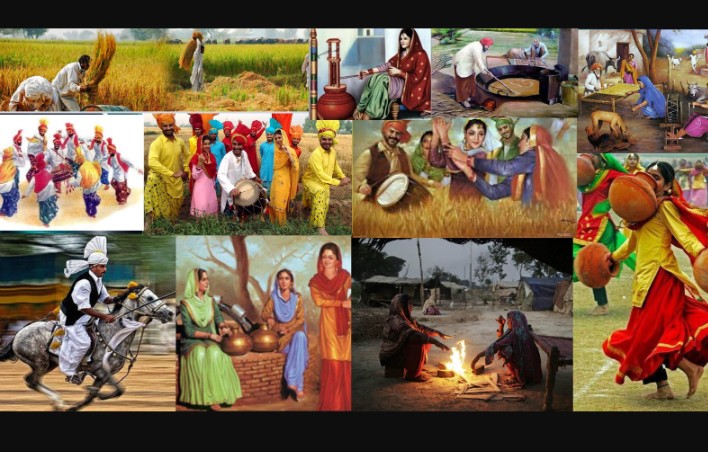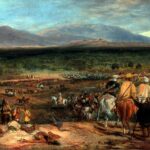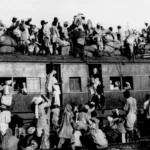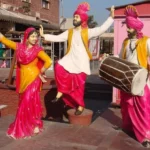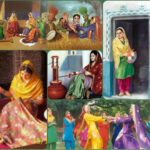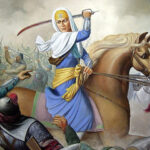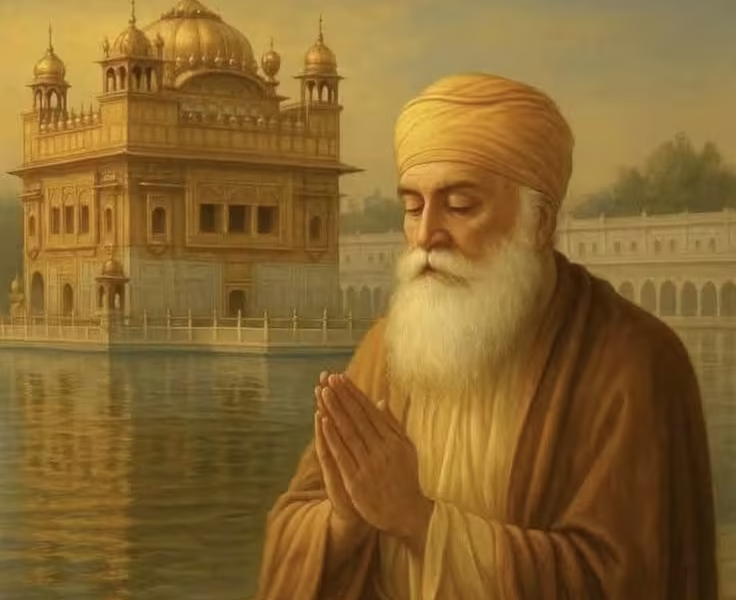The Punjabi people, who are native to the northern region of the Indian subcontinent, have a rich culture that includes their spoken and written languages, written literature, cuisine, science, technology, military warfare, architecture, traditions, sacrifices, values, and history. Both a resident of Punjab and a Punjabi language speaker are referred to as Punjabis. This name is derived from the Persian words panj (five) and ab (a) (water). This region was known as Sapta Sindhu or Seven Rivers in Rigvedic times, indicating the size of Undivided Punjab. The Indus River and the five other rivers to the south eventually converge or combine in the Punjab Valley’s lower reaches.
History
History has shown that Punjab has been home to a variety of cultures.
Period
In the Middle Ages, Punjab’s culture was incredibly diversified and varied depending on a person’s caste, group, religion, and village. The main cultures that developed in Punjab at the beginning of this era’s Medieval Age had a considerable Indo-Aryan influence.
Modern era Shalimar Gardens in Lahore
A growing number of individuals are experiencing and being inspired by Punjabi culture as a result of the enormous number of Punjabis living all over the world, particularly in Pakistan and India[citation needed]. There are traces of traditional Punjabi culture in Western society (e.g., in the United States., the United Kingdom, the European Union, Canada, Australia, Africa, and the Middle East).
Alexander the Great, the Scythians, the Portuguese, the Spaniards, the Armenians, the Greeks, the Mongols, the Arabs, the Persians, the Afghans, and Turko-Persians all made similar migrations or invasions into Punjab over the centuries, reaching as far as the Beas River in the Punjab[citation needed] (Mughals). Then, Punjab attracted Europeans (particularly the British) for a variety of commercial reasons, including its rich water resources and fertile agricultural plains. [Reference needed] These immigrants had an impact on the Punjabi people, who in turn had an impact on the then-dominant Punjabi culture.
Art
Maati ka Putla, a work by Tirlok Singh
Punjabi artists Sobha Singh and Amrita Sher-Gil are well-known.
Bhangra
One of the various Punjabi musical genres that are gaining popularity in the West and becoming more widely listened to is bhangra.
Bhangra competition concert
One of the various Punjabi musical genres that are gaining popularity in the West and becoming more widely listened to is bhangra. Western musicians employ Punjabi music in a variety of ways, including blending it with other compositions to create music that has won awards. The West is also gaining popularity for Punjabi classical music.
Dhaddi jatha ensembles perform devotional music using instruments like the sarangi and dhadd drums.
Dance
Because Punjabi culture has a rich history, numerous dances are typically performed during festive occasions like harvests, festivals, and weddings. Both non-religious and religious backgrounds can be found in the dances. The overall aesthetic can range from the exuberant bhangra men’s dance to the more sombre jhumar, the gidha women’s dance, and the malwayi gidha, which is done by both men and women.
Because Punjabi culture has a rich history, numerous dances are typically performed during festive occasions like harvests, festivals, and weddings. Both non-religious and religious backgrounds can be found in the dances. The overall aesthetic can range from the exuberant bhangra men’s dance to the more sombre jhumar, the gidha women’s dance, and the malwayi gidha, which is done by both men and women.
Crafts
The brass and copper metalwork created by the Thatheras of Jandiala Guru is produced in the Indian city of Amritsar, which is inscribed on the UNESCO List of Intangible Cultural Heritage. [5] This craft had been extinct for years due to neglect, but the designation motivated the Government of Punjab to launch a project to revive it called Project Virasat.
Literature and language
In India and Pakistan, the Gurmukhi and Shahmukhi alphabets respectively, are used to write the Punjabi language. Punjabi is a language that 130 million people worldwide speak. Four major romantic epic poems based on indigenous and assimilated folktales can be found in Punjabi literature: Heer Ranjha, written/transcribed by Sufi poet Waris Shah in 1766 (sources differ on whether the epic is fictional or non-fictional); Sohni Mahiwal, which later spread into the Sindh region and became a well-known love story there as well; Mirza Sahiban, written by Sikh poet Pilu between 1588 and 1599; By the 10th century, most of the important Punjabi poets—Hindu/Sikh Nath poets—were linked to previous Punjabi compositions.
Dress
The kurta and tehmat, traditionally worn by Punjabi men, are being supplanted by the kurta and pajama, particularly the well-liked muktsari version in India. The salwar suit, which took the place of the ancient Punjabi ghagra, is the attire of choice among Punjabi women. Another well-liked garment is the Patiala salwar.
Festivals
Lists of Punjabi festivals, Sikh festivals, Punjabi Hindu festivals, and Lahore celebrations are also included.
Maghi, the Mela Chiraghan in Lahore, Lohri, Holi, Eid ul Adha, Eid ul Fitr, Baisakhi, Teeyan, Diwali, Dussehra, and Guru Nanak Jayant are just a few of the cultural, seasonal, and religious festivals that Punjabis observe.
